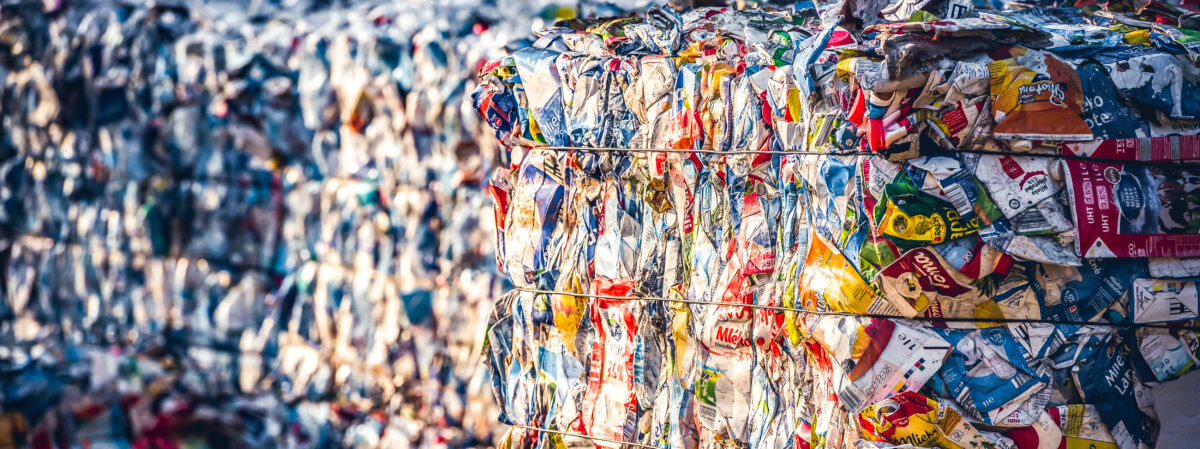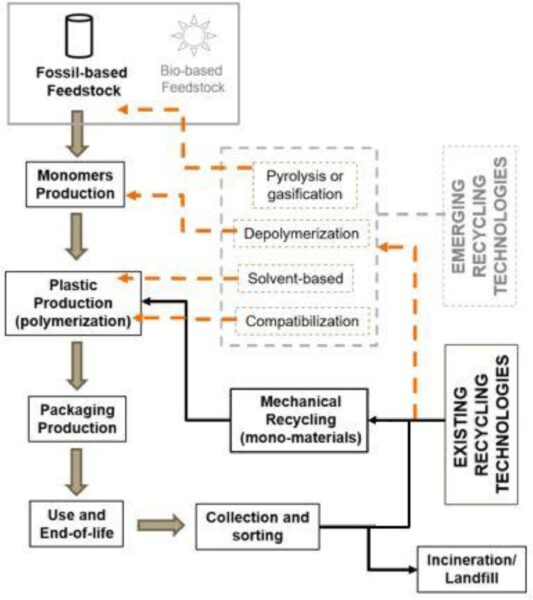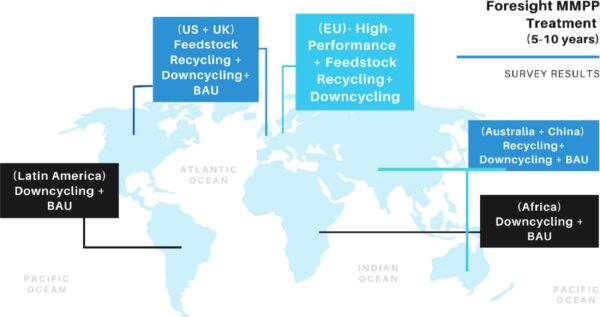Multi-Layer Plastic Packaging: Recycling Challenges and Perspectives

Despite its benefits, multilayer plastic packaging faces complexities in recycling; innovation is key to a sustainable, circular economy solution.
Benefits of Multilayer Packaging
The global multilayer flexible packaging market is expected to reach USD 211.64 Million by 2029, at a CAGR of 4.60% from 2022 to 2029. Multilayer structures consist of 3 or more layers of materials, including polyolefins and other polymers such as PET, PVDC, PA, and EVOH and other substrates such as Aluminium, Paper, etc. These layered combinations enable the creation of packaging structures that leverage each material’s advantages. These benefits include stiffness, oxygen barrier, UV protection, and sealability, resulting in packaging structures that protect the contents inside.
You can also read: Plastic Films: Solvent-Recycling Solutions
Navigating the Complexities of Recycling
Despite the advantages of multilayer structures, their recycling processes face numerous challenges, including the complexity of classification, layer separation, and the high costs associated with treatments. As a result, approximately 2.6 million tons of multilayer packaging end up incinerated or sent to landfills.
Industry and research stakeholders are proactively developing recycling technologies to enhance the viability of multilayered packaging. These efforts present opportunities to minimize the environmental impact of multilayer packaging and provide circular economy practices.

Plastic packaging value chain and its recycling routes, including existing and emergent technologies. Courtesy of Recycling of multi-material multilayer plastic packaging: Current trends and future scenarios.
Is Mono-Material Packaging a Better Solution?
Some stakeholders of the plastics sector argue that further development of recycling systems for multilayer packaging is unnecessary. They advocate for alternatives like mono-materials, which conventional technologies can recycle. This trend is known as “Designing for a Circular Economy (D4ACE). However, while these alternatives hold promise for improving the recyclability of packaging structures, they may not readily replace multilayer packaging for all applications. They must first overcome certain technical challenges, such as achieving a superior oxygen barrier and enhanced sealability. These characteristics are crucial for facilitating a transition to mono material packaging.
Future of Multilayer Recycling
In the scientific study “Recycling of multi-material multilayer plastic packaging: Current trends and future scenarios”, experts in the field participated and reached conclusions regarding the recycling of multilayer packaging materials. They emphasized the importance of developing new and advanced technologies for this purpose over the next five to ten years, particularly in high income countries. This entails the advancement of high-performance recycling technologies with classification features, especially in Europe. Additionally, there are high expectations for solutions involving chemical recycling of raw materials in the future.

Future of multi-material multilayer plastic packaging recycling methods. Courtesy of Recycling of multi-material multilayer plastic packaging: Current trends and future scenarios.
In summary, while multilayer plastic packaging presents challenges for recycling, innovation offers hope for a sustainable solution. Collaboration and investment in advanced recycling technologies are crucial for overcoming these obstacles and promoting a circular economy.
